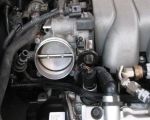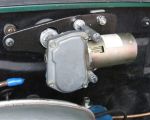How to Troubleshoot a Broken Fuel Gauge: A Comprehensive Guide for Drivers
If you've ever experienced the frustration of a broken fuel gauge, you know how critical it is to address the problem promptly. A malfunctioning fuel gauge can leave you guessing how much fuel is left in your tank, potentially causing you to run out of gas unexpectedly. In this comprehensive guide, we’ll explore how to troubleshoot a broken fuel gauge, identify common problems, and offer solutions to help you get your fuel gauge back in working order. We’ll also cover when it's best to call a professional towing service for assistance.

Fuel 4
720 Tonnelle Ave, Jersey City, NJ 07307, USA
1. Understanding Common Fuel Gauge Issues
A broken fuel gauge can be caused by a variety of factors. It's important to understand the common issues that may lead to inaccurate readings so that you can troubleshoot the problem effectively. The fuel gauge system in most vehicles includes the fuel sending unit, the fuel gauge itself, and the wiring that connects the two components.

Nearest gas station
353 Smithtown Blvd, Ronkonkoma, NY 11779, USA
1.1 Faulty Fuel Sending Unit
The most common cause of a broken fuel gauge is a faulty fuel sending unit. This component measures the level of fuel in your tank and sends the information to the gauge on your dashboard. If the sending unit becomes damaged or clogged, it may fail to send the correct readings to the gauge. This can lead to incorrect fuel level readings, such as the gauge showing “empty” even when there is fuel in the tank.
1.2 Broken Fuel Gauge
In some cases, the issue may lie with the fuel gauge itself. A malfunctioning gauge can lead to inaccurate readings or the gauge not moving at all. This could be caused by an electrical issue, a faulty circuit, or even physical damage to the gauge display. If this is the case, the gauge may need to be repaired or replaced.
1.3 Wiring Issues
Wiring problems are another common issue that can cause a malfunctioning fuel gauge. If the wiring between the fuel sending unit and the gauge becomes damaged or loose, it can disrupt the communication between the two components. This can lead to incorrect readings or cause the gauge to fail entirely.
2. Step-by-Step Troubleshooting for a Broken Fuel Gauge
Now that you understand the common issues, let's walk through a step-by-step guide to help you troubleshoot a broken fuel gauge:
2.1 Check the Fuel Sending Unit
The first step in troubleshooting your fuel gauge is to inspect the fuel sending unit. In many vehicles, this component is located inside the fuel tank, so it can be difficult to access. However, if you’re comfortable with DIY repairs, you can remove the tank to inspect the sending unit for any signs of damage or corrosion. If you notice any issues, it’s likely time to replace the sending unit.
2.2 Inspect the Fuel Gauge
If the fuel sending unit seems to be in good condition, the next step is to check the fuel gauge itself. Begin by inspecting the gauge for any obvious signs of damage. If the gauge appears to be intact, but still not functioning properly, you may need to check the electrical connections. A faulty connection can prevent the gauge from receiving accurate readings, so check for loose or corroded wiring.
2.3 Test the Electrical System
Another important step is to test the electrical system. If the fuel gauge isn’t receiving power, it won’t work properly. Use a multimeter to check the voltage at the gauge and the fuel sending unit. If the voltage is too low or inconsistent, you may need to replace the wiring or address any issues with the vehicle's electrical system.
3. When to Call Professional Help
While troubleshooting a broken fuel gauge can be a rewarding DIY project, there are times when it's best to call a professional for help. If you're not comfortable working with electrical components or you're unable to identify the issue, a professional mechanic can help diagnose the problem and provide the necessary repairs.
If you're stranded with a broken fuel gauge and suspect you're out of gas, or if troubleshooting the issue leaves you stuck, consider calling a roadside assistance service. A towing company like Rescue & Towing can provide emergency assistance, including delivering fuel to your location, towing your car to a repair shop, and helping you with other roadside emergencies.
4. Real-Life Case Study: A Broken Fuel Gauge and Roadside Assistance
Let’s take a look at a real-life story from Sarah, who faced a broken fuel gauge issue on a busy workday. Sarah was driving to a meeting when her fuel gauge suddenly started showing “empty,” even though she knew there was fuel in her tank. She pulled over to the side of the road and attempted to troubleshoot the issue, but couldn’t figure out the cause. After calling a professional towing service like Rescue & Towing, the company arrived quickly, tested the gauge and electrical system, and identified a malfunctioning fuel sending unit. The professionals fixed the issue on-site, allowing Sarah to continue her journey without further delays. This story highlights the importance of professional help when dealing with a broken fuel gauge in an emergency.
5. Conclusion: Troubleshooting or Seeking Professional Help
While troubleshooting a broken fuel gauge can be a manageable task for many drivers, there are times when professional assistance is necessary. If you’re unsure about your ability to diagnose and fix the issue, don’t hesitate to call a towing service or roadside assistance company. Services like Rescue & Towing can quickly address fuel gauge problems and provide expert support to get you back on the road.


























